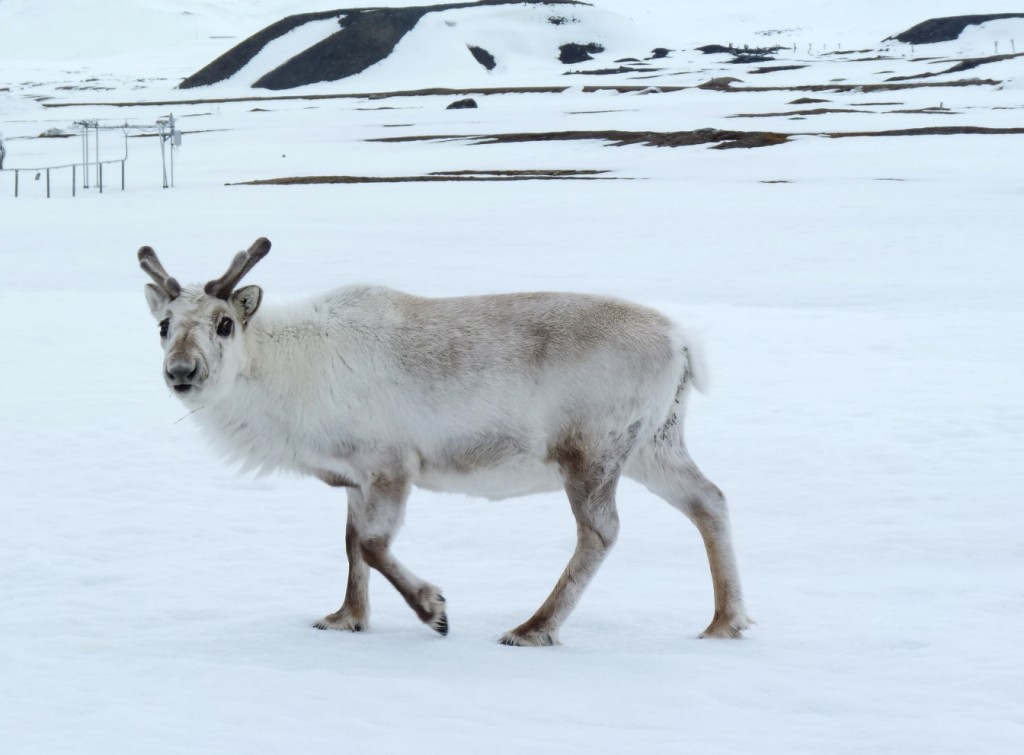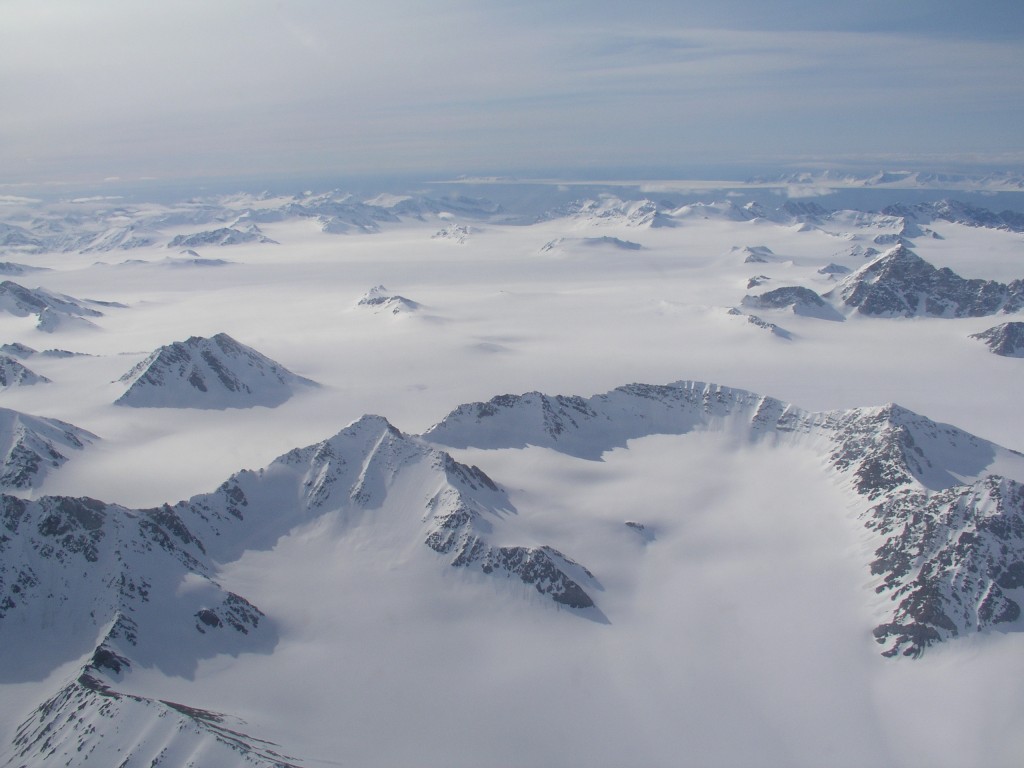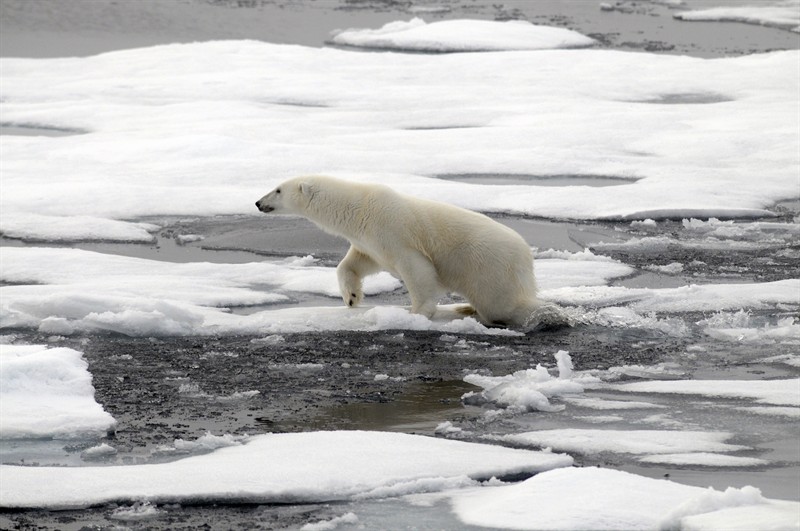Search Results for Tag: CMS
UN expert: Santa on Arctic watch
As we come to the end of what looks set to be one of the warmest years on record, there is plenty of reason to be concerned about the impact on the Arctic. Traditionally, in my home regions of the world in Germany and in Scotland, a lot of people look up to the snowy north with Santa Claus and the reindeer hopefully just around the corner. Here in Bonn, I recently hosted the latest edition of Deutsche Welle’s environment radio show Living Planet. One of my interview guests was Bradnee Chambers, the Executive Secretary of the UN Convention on Migratory Species, CMS, also known as the Bonn Convention. Towards the end of the interview, looking back over the wildlife year, I asked Bradnee how things were looking for the species that live up in Santa’s home, the High North, either all year round or just for some parts of the year. This is what he told me:
“We recently had our Arctic congress in Trondheim, Norway, and a report was released on Arctic biodiversity. It’s showing a lot of issues. Polar bears are being affected by a decrease in sea ice, and the report says in the next few decades we can expect a decline of over 35 percent in polar bears, we’re seeing a decline in the wetland systems up there, 50 percent of the wetlands have disappeared in the last decade in the Arctic. We’re seeing species like the ivory gull being affected. With the decline in the ice coverage in the Arctic we’re also going to see a lot more development, a lot more drilling, and this is going to affect the pristine Arctic waters that have been pretty much left untouched from development. And I’m afraid in general we are going to see a lot more impacts, as we see the Arctic change and transportation routes open up”.
Iceblogger: Will Santa still find his own transportation route on his sleigh down to us this Christmas?
Yes, I’m sure Santa will still find his way down from the Arctic to bring lots of happiness to all the children around the world. But I’m sure he’s watching out at the same time to see that the place where he lives is not going to be degraded or decline any further than it has in the last few decades!
Here’s hoping Santa will have plenty of helpers with that mammoth task in the coming year.
Happy Christmas to all Ice Blog readers, enjoy your end of year break.
I will be backafter the holiday, as I prepare for a trip to Arctic Svalbard in January. More soon. Here is a Svalbard pic to keep you going in the meantime and, I hope, make you look forward to some icy blog posts to come, as you “chill” away the festive season!
First World Wildlife Day and the Arctic
Maybe like me you were not aware that up to now there had been NO World Wildlife Day. Sometimes I have the feeling every day on the calendar must have been designated the day of several different causes. In fact, the UN only decided in 2013 that March 3rd 2014 should be the first World Wildlife Day. As I have commented on similar occasions here on the Ice Blog, the danger of these “international day of whatever” events is that the inflation can actually detract attention. Nevertheless, these designated days can be an opportunity to focus on particular topics. World Wildlife Day is a fine chance to remind ourselves once again of the need to protect biodiversity, especially in such a key region as the Arctic, which is being affected so drastically by climate change.
The Convention on Migratory Species of Wild Animals (CMS), a UN body with its headquarters in Bonn, plays a key role in wildlife protection. Given that animals do not recognize human-designated national borders, wildlife protection has to involve international cooperation, which is what CMS does. Bradnee Chambers is the Executive Secretary of CMS. He gave me this message for the Ice Blog on World Wildlife Day, focusing on that most famous of all Arctic creatures, the polar bear :
“The Arctic is extremely fragile and changes to its ecosystem from climate change will have irreversible consequences on migratory species such as the polar bear. We must stabilize global green gas emissions before the polar bear literally loses the very ice beneath its feet.” I can only wholeheartedly agree. And what is true of the polar bear, is true of so many other species. Let me quote at length from an article Bradnee Chambers has written:
“The largest terrestrial predator on Earth is losing the ground under its feet. Polar bears used to dominate the expanse and loneliness of the Arctic, which can seem unaffected by human presence so far. However, appearances deceive. The polar bear is now a symbol if the many species whose survival is at risk because of the effects of climate change and pollution.
The antics of Knut the polar bear cub in the Berlin Zoo touched the hearts of the German public and won him fans all over the world. The polar bear might look cute and cuddly, making it a perfect icon for Coca-Cola and many other organizations that wish to use its iconic recognition value to promote their cause or product. It is, in fact, a ferocious predator that spends much of each year on the sea ice hunting and, in the process, covers distances of up to 620 miles (1,000 kilometers). But the polar bear is also a vulnerable species listed on the International Union for Conservation of Nature’s (IUCN) Red List — one that requires constant attention and sound conservation management humanity is to ensure the polar bear’s existence for future generations.
There have long been concerted, international efforts to conserve the polar bear, and the Polar Bear Agreement meeting in Moscow in December 2013 celebrated 40 years of collaboration among the five nations where polar bears exist — namely Canada, Greenland (an autonomous community that is part of Denmark), Norway, the Russian Federation and the United States. The meeting attendees agreed on a declaration promising to beef up the monitoring of these animals and the assessment of their status, and to commit to working toward developing a polar bear action plan for the next meeting of these countries in two years’ time.
Nevertheless, these countries admitted in 2009 that climate change was the main threat that needed to be tackled. Early indications from that time were that the individual conservation efforts of the five countries were beginning to bear fruit, with most polar-bear populations at least stable — with a total of 20,000 to 25,000 individuals in the wild. But all of these hard-won advances could easily be lost if Arctic ice continues to diminish.
The Convention on Migratory Species (CMS) and its Scientific Council have been examining the effects of climate change on migration for years and, in 2011, passed an unequivocal resolution — “Migratory Species Conservation in the Light of Climate Change” — identifying the polar bear as one of the species most threatened by climate change. (…)
Climate change, which is leading to reduced ice cover and the thawing of permafrost, is not the only factor having detrimental effects on polar bears. Increased economic activities, such as oil and gas exploration and exploitation, and shipping, are also taking their toll. As apex predators, polar bears are vulnerable to environmental pollutants, and post-mortems have shown dangerous levels of mercury and other toxins in the animals. These pollutants even affect newborn cubs, which ingest the poisons in their mothers’ milk. Governments have to strike a fine balance: How are they to protect a fragile environment and forsake economic opportunities while exploiting much needed natural resources and creating jobs and wealth? The choices made often make the prospects for the polar bears bleaker, with fewer places for them to hunt and build dens in which to raise their young. The CMS is a global treaty whose parties have committed to working together to conserve the hundreds of species listed on its appendices. These range from the blue whale to the monarch butterfly to gorillas, whose territories straddle the borders of the Democratic Republic of the Congo, Rwanda and Uganda, and the arctic tern, which covers hundreds of thousands of kilometers in a lifetime in its pole-to-pole migrations. As a worldwide convention, CMS has the breadth to deal with species such as the polar bear in the context of climate change, adding a global perspective to conservation policies. The convention is used to dealing with multiple threats — such as pollution, climate change and environmental degradation — and it is recognized as the Convention on Biological Diversity’s lead partner on the conservation and sustainable use of migratory species. It has a catalog of more than 30 years’ worth of wide-ranging policies and a track record of fostering international cooperation.
At the International Forum on the Conservation of Polar Bears — which was held in December and attracted high-level participation, including from Russian Environment Minister Sergei Donskoi and his Canadian counterpart, Leona Aglukkaq — delegates were confronted with a disturbing prediction: The polar-bear population could fall by as much as two-thirds by 2050. Nations need to take action now, and the bears need all the friends they can get. CMS is ready to play its part if its parties agree to include the polar bear under its appendices.”
Bradnee Chambers’ article is available in full on LiveScience.
In a video message to mark World Wildlife Day, UNEP chief Achim Steiner says wildlife is too often thought of as a threat to development. He stresses that it is not just the big iconic animals we need to worry about. He stresses how biodiversity is essential to support life on earth. This biodiversity is under threat from climate change and pollution all round the globe – and especially in the rapidly changing and developing Arctic.




















Feedback